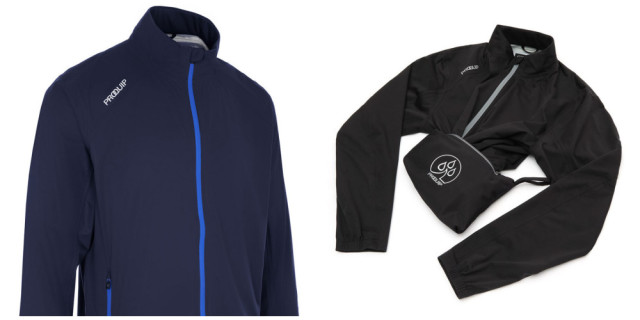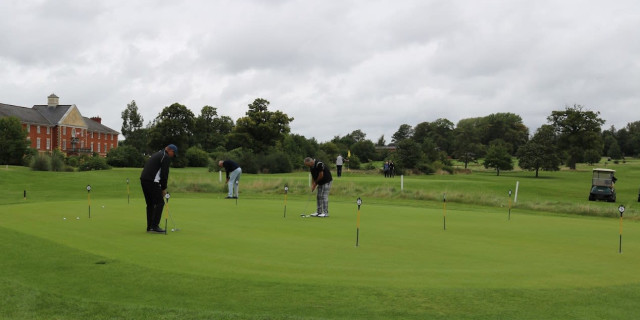
How Putters Have Changed Through History
There are few clubs more important in the golf bag than the putter. Ostensibly a humble piece of kit, it lacks the glamour of a shiny and sleek-lined iron, or the presence of a beefed-up driver. But what the putter may lack in style, it more than makes up for in significance. As everyone knows, few clubs can turn a bad or a so-so round into an excellent one quicker than a hot short stick. But what about the history of this often-underappreciated weapon? Was it always as ambivalent, or as important, as it is now? In this article, we recover the changing faces of the quiet club. Read on to find out more.
A Humble Beginning
Although it is sometimes disputed, most historians agree that the earliest form of golf was inaugurated in 15th century Scotland. Compared to the space-age models which are the norms today, the earliest golf clubs were crude, primitive things, fashioned by hand from wood. The putter was no exception. Parked on a shaft which was typically comprised of Ash, a hardwood head, such as Beech, made up the original putters, known then as ‘cleeks’. We know this because of a document of King James IV of Scotland’s demanding that a bow-maker produce him a set of clubs. These included a ‘longnose’ (driver), ‘grassed driver’ (fairway wood), ‘spoon’ (iron), ‘niblick’ (wedge) and, finally, a ‘cleek’ (putter). Aside from their woody make-up, these early putters were not too dissimilar to the one’s we wield now. Picture a thin, wooden gooseneck model and you have the idea.
The First Metal Heads
After centuries of wooden heads, metal-headed putters finally arrived on the scene. The change was precipitated by an advancement in the quality and make up of the golf ball. Up until 1848, the main style of ball had been the ‘feathery’ – so named because of the feathers with which it was stuffed – but in the mid 19th century, a Scottish divinity student named Robert Adam Paterson welded some shavings of resin from an Indian tree together to form the ‘gutta percha’. Much more durable than the feathery, the new ball allowed clubs, including the putter, to be forged from more aggressive materials. The result? The first metal headed short sticks.
Schenectady Putter
Until 1900, putters, like irons, exclusively had their shafts in the heel. But this all changed when inventor Arthur Knight of the Mohawk Golf Club in Schenectady, New York, had the brilliant idea to move the shaft towards the centre, creating the first ever centre-shafted putter. Like so many innovations in golf, the new design was initially greeted with ridicule: it looked clunky, abnormal, ridiculous. The mockery soon stopped though when Walter Travis wielded the putter to claim victory in the 1903 US Amateur and the 1904 Amateur, equivalent to majors back in the day. You’d think this might have won the Schenectady the all-clear. Think again. Spooked by the putter’s apparent efficacy, the R&A promptly banned it. It was only in 1951 that the putter again became legal to game.
Bobby Jones’s Calamity Jane
There are few putters more famous than golf legend Bobby Jones’s famous flatstick, Calamity Jane. In an improvement on the old ash shafts which had dominated the game in its earliest incarnations, Jones’s Calamity Jane’s shaft was made of hickory. The head was metal, made by Condie and sold by the wonderfully alliteration-friendly named William Winton. But it’s the feats that this putter was responsible for, more than its design, that is the reason that it’s such a key part of the putter’s history. Jones used the putter to capture a record 13 major championships, including the grand slam – then christened the ‘impregnable quadrilateral’ – in 1930. As any golf historian worth their ribbons knows, Jones ascended the very pinnacles of the sport. And the blade that he had at his side? Calamity Jane.
Karsten Solheim Forges the PING Anser
The next great revolution in putting history came with the PING Anser. Named because it was the ‘answer’ to the problems of putting, the club, manufactured by Karsten Solheim, is a true classic of putter design. Famously, PING creates a gold replica of the putter used by every player who uses a PING model to triumph on the tour. The golden Anser is the most popular stick in the vault by a shimmering mile, clocking over 500 victories worldwide in the last 40 years. Forged from powerful and nigh indestructible manganese bronze, the original Anser was not just effective, but also a thing of beauty. The putter was (and still is) beloved by all the top pros, almost as soon as it hit the greens. Gary Player and Tony Jacklin both couldn’t wait to get the stick into their bags, and Tiger Woods used the Anser during his junior days, honing his world-famous putting technique.
Scotty Cameron
The Anser design pioneered by Solheim quickly became standard among manufacturers. But there was one brand that wasn’t content with a mere copy: they wanted to go even further. Step forward Scotty Cameron. The American putter designer shot to fame in 1993, when Bernard Langer, struggling with his putter, slipped a Scotty Cameron prototype into his bag in the Masters. Langer’s putting swiftly 180ed and he went on to win, generating heaps of publicity for the Scotty brand. In 1994 Scotty was subsumed into Titleist, and with the clout of one of the biggest manufactures in golf backing his putters, innovated his iconic Newport design. Modelled on the Anser, the Newport added a soft trailing edge to the PING classic, as well as custom face milling and a whole raft of other features to make the luxury putting item that we recognise today.
Odyssey White Hot 2-Ball
The PING Anser is a lovely design, and was considered forgiving when it first arrived. In the 21st century, however, standards of forgiveness have improved dramatically – or perhaps the average putting stroke has instead declined! Either way, the turn of the century saw a shift towards bigger and thicker headed putters designed to give more help on less than ideal strikes. The leader of these was undoubtedly the Odyssey White Hot 2-Ball which took the putting world by storm in 2001. The idea was simple: a fat backed putter with two golf balls drawn onto the head to help you align the face. A super high MOI (moment of inertia) provided further help, the big head cushioning off-centre strikes. A soft urethane insert provided the final touch, increasing feel and making a much nicer sound at impact than the intrusive ‘ping’ of putters like the Anser.
TaylorMade Spider
Continuing the trend towards oversized putterheads and forgiveness over razor-line style, the TaylorMade Spider encapsulates the most recent phrase of putter history. Debuted in 2008, the putter was one of the very first truly extra-terrestrial flat sticks to gain popularity on tour. One look at the putter and you know why it’s called the spider: from a metal shaft, the head fans out for ever below like a tarantula squashed under a hammer. But what it lacks in suaveness, it gains in sheer usability. The putter’s extra forgiveness and the boost it provides to a less than perfectly straight stroke has earned it a formidable following on tour. Jason Day famously used the Spider to capture the 2015 PGA Championship. And the Aussie, Dustin Johnson and Spanish hotshot Jon Rahm are just three of a number of top players wielding the blade.
Related Articles
The 10 Longest Putts Ever Holed
The Best Putters on the PGA Tour
How You Compare to the Best Putters
Have any additions to this list or want to point out putters we’ve missed? Have your say in the comments below.
Tags: taylormade scotty cameron putters ping odyssey daily picks










